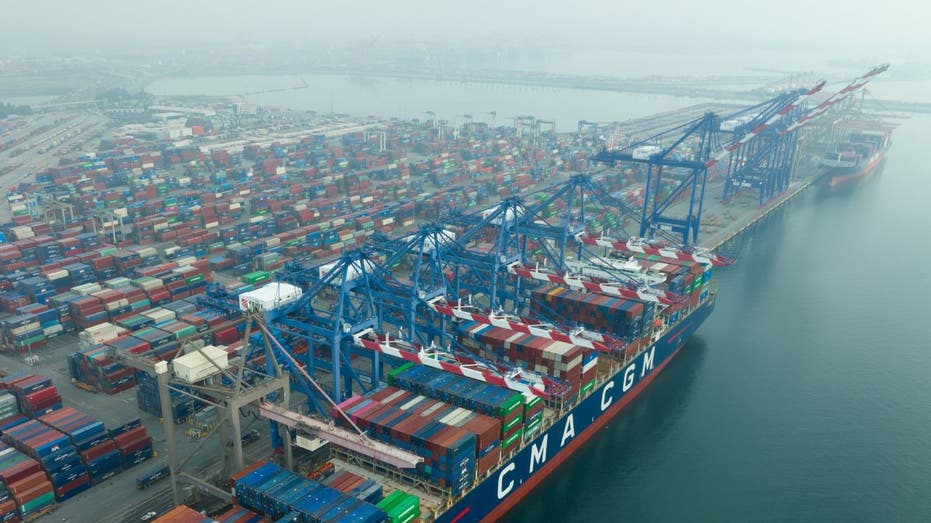JPMorgan trimmed its forecast for the probability of the U.S. economy entering a recession this year after President Donald Trump reached a deal to temporarily lower the tariffs he imposed on imported goods from China.
The president announced Monday that a deal has been reached to lower the “reciprocal” tariffs he imposed to lower the overall tariff rate on Chinese goods from 145% to 30% for 90 days while negotiators work to finalize a longer-term agreement. The Chinese government, in turn, reduced its retaliatory tariffs on U.S. goods from 125% to 20% for the 90-day period.
“The administration’s recent dialing down of some of the more draconian tariffs placed on China should reduce the risk that the U.S. economy slips into recession this year,” wrote Michael Feroli, chief U.S. economist at JPMorgan. “Conditioned on current rates prevailing indefinitely, we are now projecting real GDP growth for this year at 0.6% (4Q/4Q), up from 0.2% before the latest tariff news.”
“We believe recession risks are still added, but now below 50%,” Feroli noted. The firm’s prior forecast put the risk of a recession this year at 60% in the days after the Trump administration’s “reciprocal” tariff announcement.
WHITE HOUSE SLASHES ‘DE MINIMIS’ TARIFFS ON CHINA TO 54%
JPMorgan’s analysis projected that the personal consumption expenditure (PCE) index – the Federal Reserve’s preferred inflation gauge – will be 3.5% at the end of this year, lower than the estimate of 4% before the tariff pause, but higher than the 2.2% projection from the start of the year.
A PCE reading of 3.5% would be well above the Fed’s inflation target of 2%, making it more likely the Fed would delay interest rate cuts unless the labor market starts to deteriorate. The unemployment rate was 4.2% in April, and JPMorgan projects the unemployment rate will peak at 4.8% in the second quarter of 2026.
CHINA CRITICIZES US-UK TRADE DEAL, SAYS IT’S ‘BASIC PRINCIPLE’ NOT TO TARGET OTHER COUNTRIES: REPORT

“We still project a modest contraction in employment later this year, as labor demand is projected to slow even more than labor supply,” Feroli wrote. “Our updated labor market outlook is less demanding of immediate action to stem employment risks; for the Fed, we are pushing back the timing of the resumption of rate cuts from September to December.”
He added that the bank sees three further sequential rate cuts after December, which would lower the target range for the benchmark federal funds rate to a range of 3.25% to 3.5% by the second quarter of 2026.
TRUMP SAYS CHINA DEAL WILL OPEN UP MARKET FOR US BUSINESSES
The report noted that the changes to tariffs on Chinese goods lowered the average effective tariff rate from around 24% to about 14%, a notable reduction though it remains well above the 2.3% effective tariff rate that prevailed in 2024.
“A tariff is a tax, and so relative to prior assumptions this can be seen as a tax cut of almost $300 billion,” Feroli wrote. “Most of that tax was likely to have been borne by U.S. consumers in the form of higher prices.”
“The rolling back of this tax should provide some relief to consumer spending, and in our modeling is enough to tip the second-half growth outlook from one of modest contraction to one of modest growth,” he added.
Read the full article here

